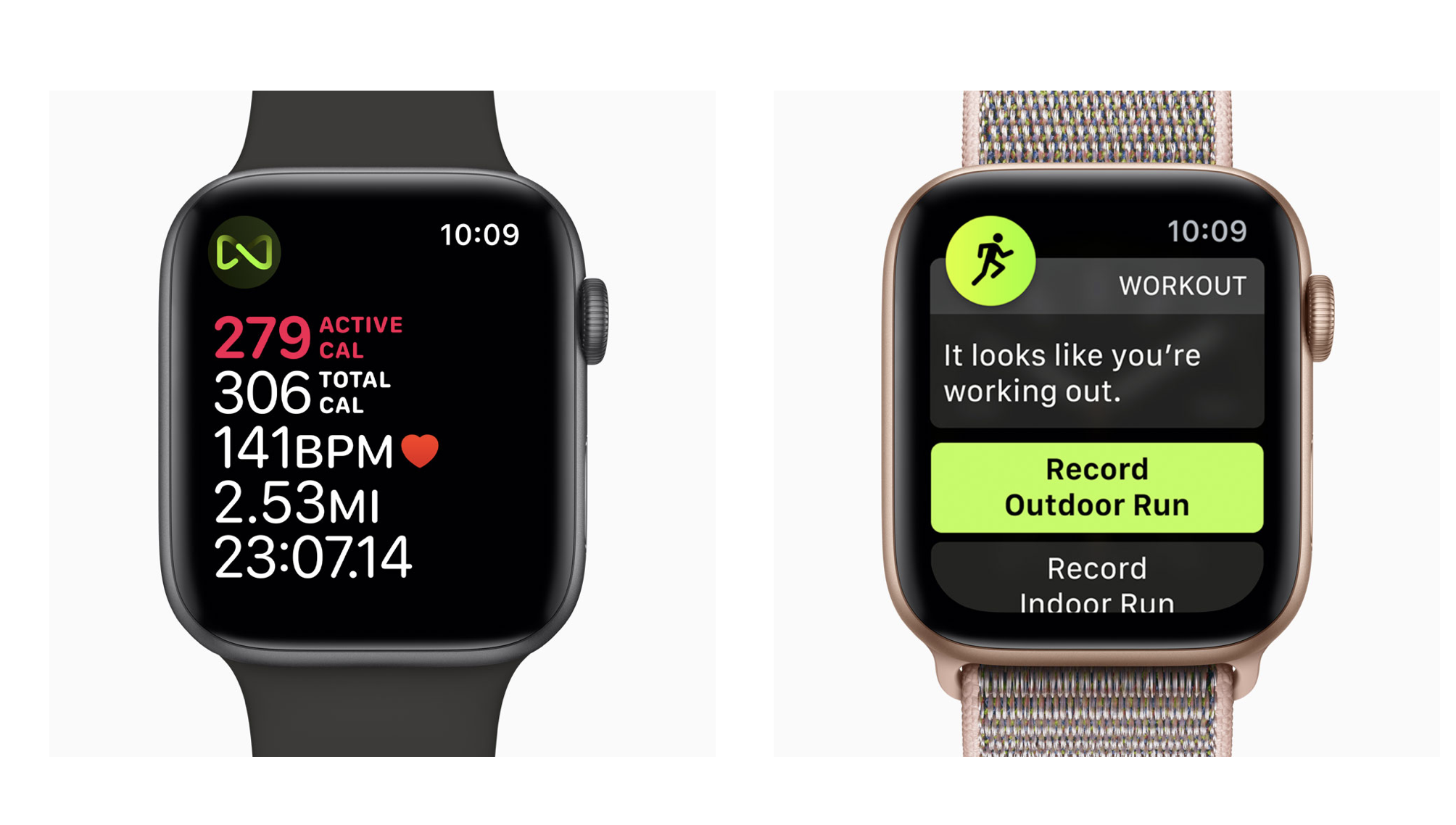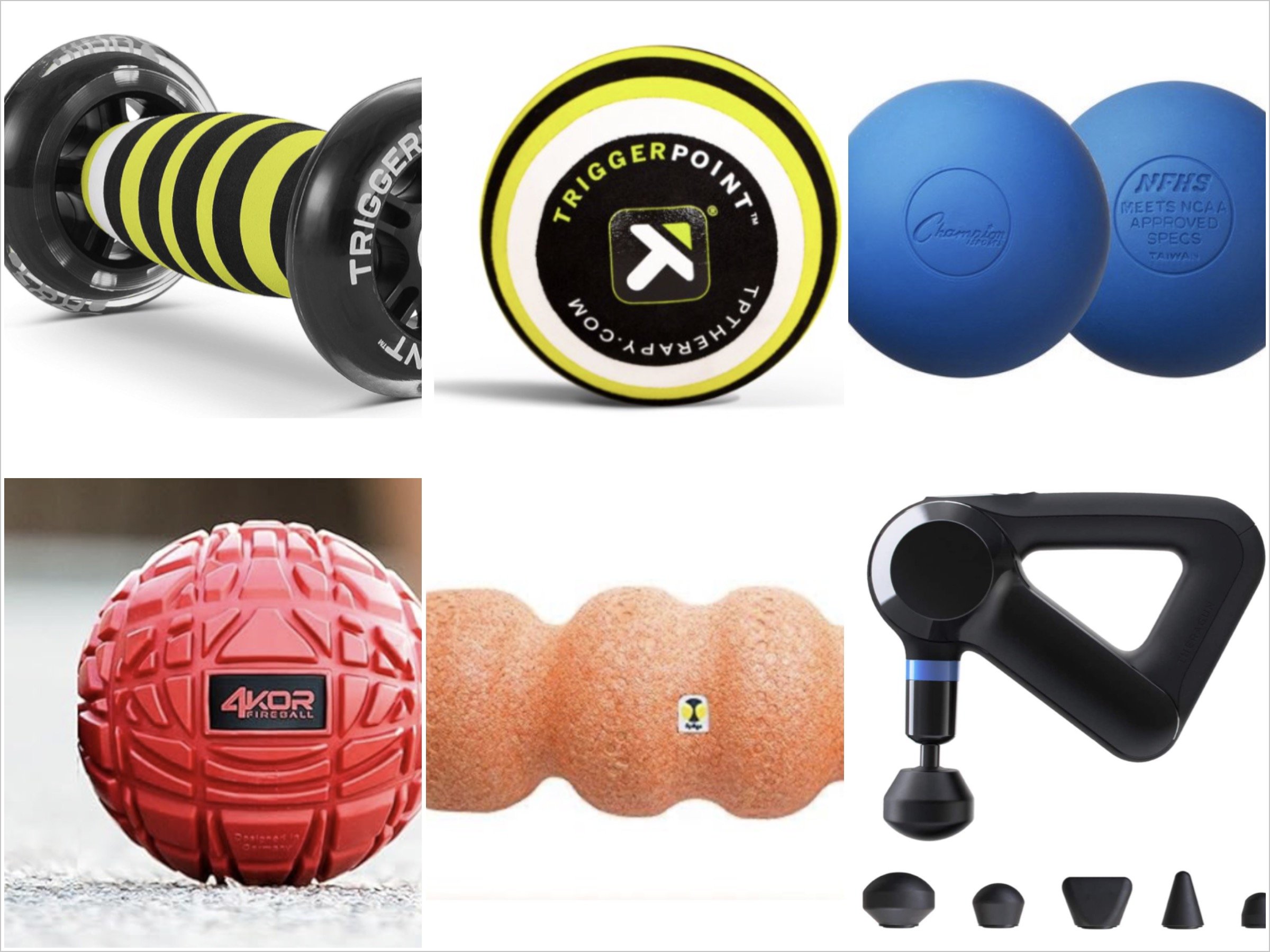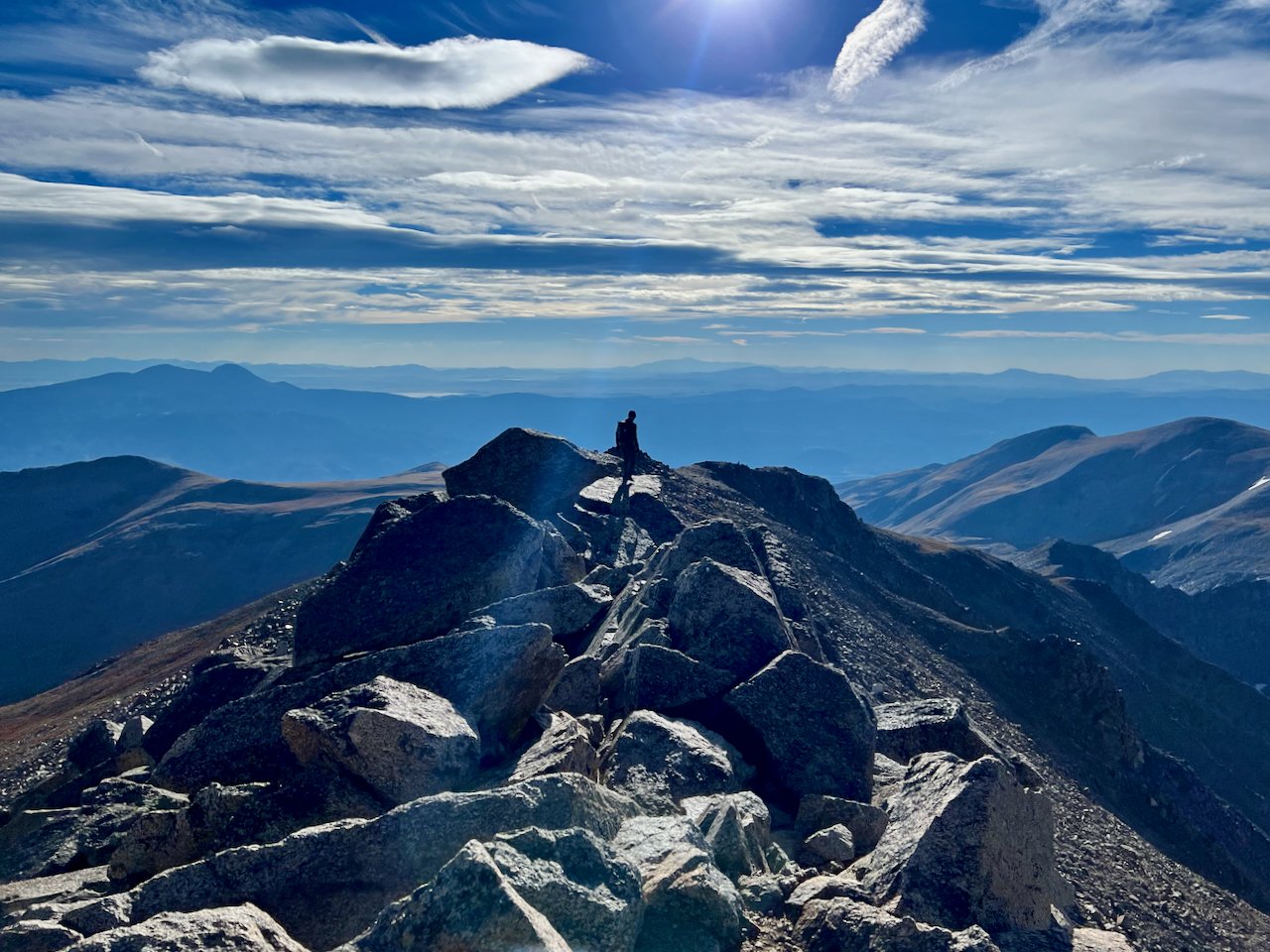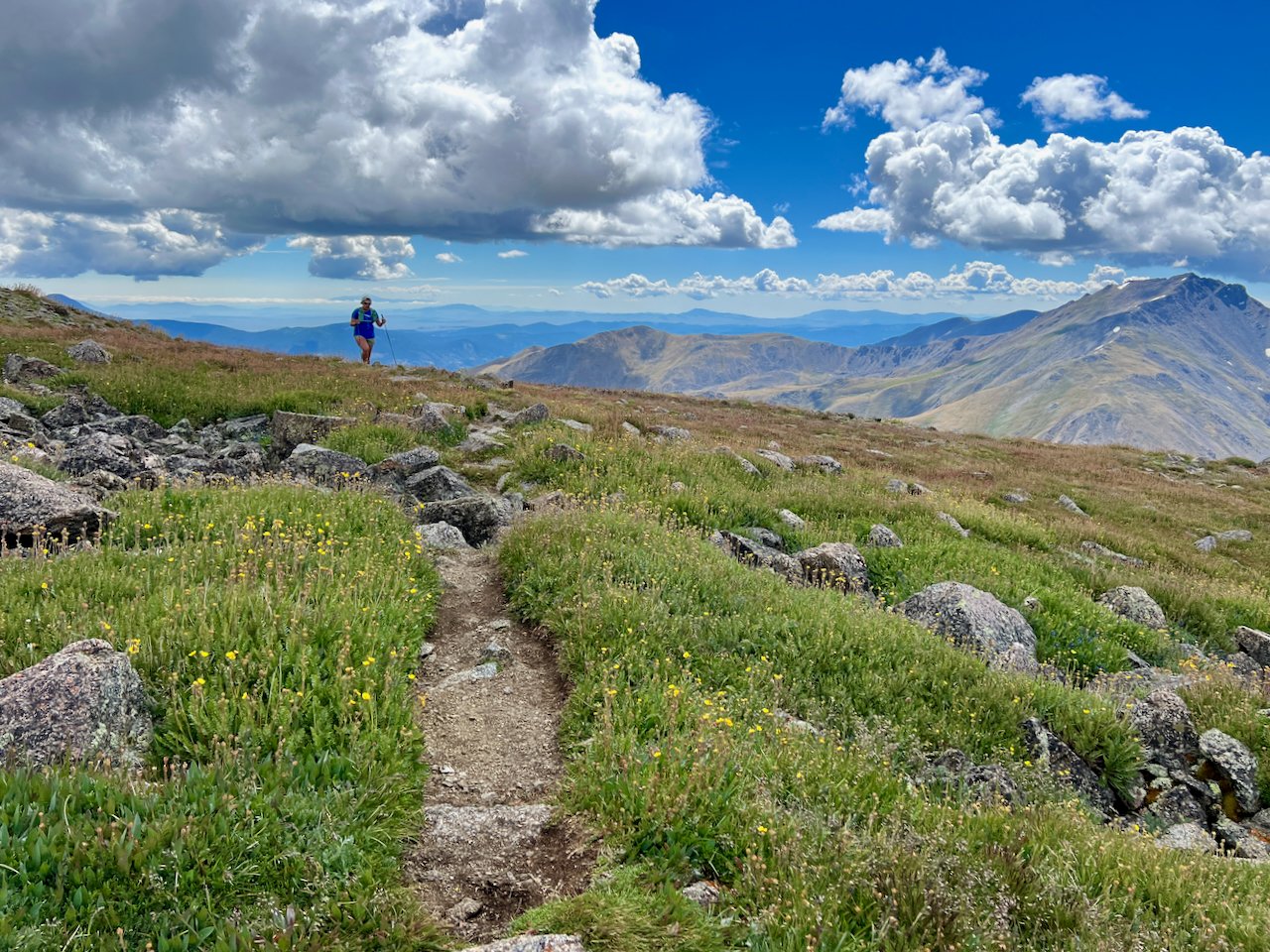Calf Muscle Tightness, Achilles Tendon Length and Lower Leg Injury
If you run for long enough, it is almost certain that you will have to deal with an injury at some point. The repetitive motion of running has a way of exposing every weakness and imbalance over time. Those impairments can quickly turn into an injury if not addressed. Some of the most common areas of injury in runners are the ankle and Achilles tendon.
Running, whether on trails or roads, places a tremendous amount of stress on our ankle joint and its tendons. In this column I will show how the ankle joint and the muscles and tendons around it operate when we run, how things can go wrong, and how to fix them to avoid or recover from an injury. I will also define some of the common terms used when talking about muscles and movement.
First, lets take a look at the basic anatomy of the ankle and calf to get a better idea of what is involved:
Fig. 1
As you can see in the diagram above, the lower leg and ankle is a complex system of muscles, tendons, and joints. This system works to provide both stability and mobility while we walk or run. Pay special attention to the Gastrocnemius and Soleus muscles, as well as the Calcaneal (Achilles) tendon, as those will be the focus of this discussion.
The Gastrocnemius and Soleus are the muscles typically thought of as the “calf” muscles. They are the main sources of power for the motion of the ankle. The fascia (connective tissue) of these two muscles comes together to form the Achilles tendon at the back of our ankle. Therefore if the calf muscles are tight then the Achilles is tight. They are so interconnected that a problem with one is a problem with both.
The Achilles tendon transmits the force of the muscles across the ankle joint, allowing for both concentric and eccentric motion. Concentric motion is the shortening of a muscle- such as going from regular standing to standing on your tiptoes. Eccentric motion is the controlled lengthening of a muscle- such as lowering your heels slowly back to the floor from tiptoes. Eccentric motion actually requires more strength and places more stress on our muscles and tendons. This is why many strains and tears occur when an athlete is trying to slow down or land from a jump. Both of these motions are vital for efficient and injury-free running.
Obviously we use these muscles A LOT when we run. Anyone who has ever done a really hard run or workout has felt the burn of soreness in his or her calf muscles the next day. Because these muscles and tendons get so much use, it is very easy for them to get overworked and tight. When muscles get tight, they are actually getting less pliable, meaning that they cannot lengthen properly and therefore restrict the motion of the joint they are connected to. When calf muscles get tight the ankle cannot move properly, especially in the motion of dorsiflexion, or bending the ankle to bring the toes up. Research has shown that we need 20° of ankle dorsiflexion range of motion for effective running. People with tight calves may have as little as -5°!
Fig. 2
When we run with tight calf muscles, it places more stress on the Achilles tendon. Here’s why; as we go through our running stride our body weight transitions over the ankle joint, creating natural dorsiflexion. This requires our calf muscles to lengthen, but if they are tight they cannot lengthen, therefore pulling on the Achilles and putting you at risk for tendonitis, a muscle strain or tear, or a tendon rupture.
Think about when you’re running and all your weight is on one foot. We call this the Midstance phase of the gait cycle. The diagram below provides a great visual. Look at the right ankle in the Midstance position and how much it has to bend forward into dorsiflexion. This happens with every step during running. Efficient running requires about 90 steps per minute. Multiply that by the time it takes to run a marathon and you can see how an overuse injury can occur!
Fig. 3
When a motion is restricted our bodies naturally compensate for that limitation. Every part of the body is connected, so when motion cannot occur at one joint, the body compensates by getting it from the surrounding areas. In the short term this works well, it allows us to keep moving and living our lives without interruption. However, if these compensations persist they can cause injury, as the parts of the body that are compensating are not designed to take on those added forces. We’ll look into some of the common compensations for tight calf muscles and limited ankle range of motion, but first lets examine the foot and arch and how they work.
Fig. 4
The foot and ankle assembly is a beautifully engineered structure that serves a dual purpose. It acts as both a mobile adaptor- it can absorb impact forces and adapt to varied terrain, and as a rigid lever- it must immediately and seamlessly switch to a stiff lever for the transference of force to propel us forward as our weight moves forward over our foot.
The arch of the foot is the key to this dual tasking. The arch naturally pronates, or flattens a little, to absorb the force of impact with the ground. As the body moves forward over the foot on the ground, (like the transition from Midstance to Terminal Stance in the Diagram above) the arch must then re-supinate, or un-flatten, to become rigid and allow our calf muscles to propel us forward to toe-off. Figure 5 below shows the progression from pronation to supination with a rear view of the right foot.
Fig. 5
Limitation in ankle mobility- whether it a result of muscle shortening, tendon stiffness, or joint restriction- interferes with this process by not allowing the lower leg to translate forward over the ankle joint. Think about how much it hurts to go down stairs with sore calves; this is because our calf muscles must lengthen as our weight moves forward just as it does in running. When we have sore or tight calf muscles we move differently- sometimes just to avoid a motion that hurts, sometimes because the muscles have become so tight that the motion of ankle dorsiflexion actually cannot occur.
These compensations in our movement pattern will almost inevitably lead to injury. Below I will detail some of the common compensations and how they can cause injuries in runners. These compensatory patterns are interrelated and almost always happen in combination with each other, but for the sake of clarity I will separate them.
Compensation 1: Midfoot Pronation: increased collapsing of the arch, or “flat feet”
With this compensation the body makes up for the limited range of motion at the ankle by getting additional motion through the joints in the middle of the foot. This allows the body to bypass the motion of ankle dorsiflexion by rolling the arch in. As you can see in Figure 6 below, the feet are excessively pronated. This causes the arch and ankle to fall inward, while also creating a twisting motion and pressure on the inside of the knee. As the picture on the right shows, this is magnified by the additional stress placed on the body by running. I would guarantee that these people have tight calves!
Fig. 6
Compensation 2: External Rotation of the leg: rotating the foot and/or leg out into a duck-walk stance.
Another way our body compensates for tight calf muscles is by rotating the whole leg outward when we walk or run. This is the classic “duck-walk” pattern with the toes pointing out to the side rather than straight ahead. This allows the body to bypass the limited motion of ankle dorsiflexion by rolling over the inside of the foot as it is turned out. It is the body’s way of clearing the foot out of the way. This not only places undue stress on the inside of the ankle and knee, but it is also terribly inefficient. By rotating the toes out and rolling over the inside of the foot the runner is not able to use the foot as a rigid lever as discussed earlier. All the power of the calf muscles is lost and it takes more energy to keep moving forward. The figure below shows the typical gait of a runner with externally rotated legs and feet.
Fig. 7
Compensation 3: Hallux valgus: the big toe being forced out toward the other toes (seen as a bunion in extreme cases).
Similar to the above compensation, this is the body clearing the big toe out of the way to make up for limited ankle range of motion. In healthy feet the big toe is the main way in which the foot engages with the ground, it is a major force generator to propel us forward when running. However, when ankle range is limited it gets in the way of . So the big toe is forced out as the arch collapses in. In extreme cases this can lead to the development of a bunion over time.
Fig. 8
The list of injuries that can result from short calf muscles, tight Achilles tendons, limited ankle range of motion, and its compensations includes, but is not limited to:
Achilles Tendinitis
Achilles tear
Calf strain
Ankle sprain
Runner’s Knee
IT Band Syndrome
Plantar Fasciitis
So now that you know how tight calf muscles and Achilles tendons can affect you, what can be done about it? Just because you have tight calves or Achilles issues does not mean you are doomed to a life of injury or must stop running! It just takes some diligence and work to correct these problems. Stretching and working with the muscles and fascia is the best way to begin to address these issues. We will explore strengthening exercises in the next column, but now lets look at some specific ways to stretch.
Stretches should be held to a point of mild discomfort for 3 cycles of 30-45 seconds each. Stretching should be done in the morning, after a run, or at night before bed, but not immediately before running. Studies have shown that stretching a muscle prior to exertion can actually decrease its strength and make it more susceptible to injury. It is best to loosen up with a dynamic warm up routine to prepare the body for activity and leave the stretching for post-run.
Runner Wall Stretch
This first stretch is so ubiquitous (and needed) among runners that it is called “The Runner Stretch.” This is a stretch you are probably familiar with, but there are some common form errors that can make it less effective.
To perform this stretch, stand facing a wall with one foot back (this is the leg that will be stretched). Bend the front knee and lean toward the wall, keeping your back straight and supporting yourself with your hands on the wall.
STANDING ACTIVE GASTROCNEMIUS STRETCH - Actively Stretching your Gastrocnemius muscle of your lower leg.
Where most people go wrong is in rotating the back foot outward. This is a compensation just like in running gait, and will not stretch the desired muscles. Keep the toes of both feet pointed straight ahead at the wall the whole time. Perform on both legs.
Step Stretch
To perform this stretch, stand on a step or curb with one heel off the edge (this is the leg that will be stretched). Lightly support yourself on a railing or wall for balance and bend the leg that is not being stretched to let the heel hanging off the edge sink down toward the floor, as in Figure 10 below. This will stretch the gastrocnemius muscle.
As we have seen though, the gastrocnemius is not the only calf muscle. To target the soleus muscle perform the stretch the same as above, but gently bend the knee of the leg being stretched as in Figure 11 below. You should feel the pull lower in your calf, near the Achilles tendon. Depending on which muscle is tightest, you will feel more of a stretch in the first or second variation. Again, keep the toes pointed straight ahead and not out to the side.
Wall Stretch
To perform this stretch, face a wall or step and stagger your feet. Place the toes of the front foot up the wall and press the heel into the floor (this is the leg that will be stretched). Lean into the stretch and perform it with a straight and bent knee just as the previous stretch to target both muscles of the calf, as in Figure 12 below. Just as with the previous two stretches, keep the toes pointed straight.
STANDING SOLEUS ACTIVE STRETCH
How to: From a standing position, place both hands against a wall at shoulder height with feet in a staggered stance position hip width apart and straight. Slowly drop your hips a level, allowing the back legs knee to travel forward as far as you can without the heel coming off the ground. Focus on the stretch coming from the back of the lower leg furthest from the wall. This can be done actively for reps of 3 seconds or held statically for 30+ seconds.
Compensations: Watch for the back heel coming off the ground and the foot collapsing or externally rotating (toes shifting outward).
Self-Myofascial Release
Another great way to increase the flexibility of calf muscles is with myofascial release. Myo- refers to muscle tissue, and fascia refers to connective tissue, so myofascial release is the lengthening of the muscle and tendon system together. Deep massage is one form of this technique, but you can perform it at home cheaply and easily with a foam roller!
Sit with the roll in front of you under your calf with your ankles crossed. The bottom leg will be the one being worked on while the top leg provides pressure for a deeper release. Roll yourself slowly out and back with your arms.
This is sort of a “hurt so good” sensation as it can be quite painful in areas that are tight, but feels so good when they release. You can stop and oscillate back and forth on any knots you find, being sure to take deep breaths the whole time. We often hold our breath when we’re in discomfort, but this only serves to make us tense up more and the muscles will not release as easily. Deep breathing also helps to ease discomfort. To learn more about foam rolling, click here.
Now you are armed with the knowledge to identify and address calf muscle and Achilles tendon tightness before it turns into an injury! Issues like this come up for every runner, the key is to be proactive and smart so you can keep doing the sport you love.
The next column will explore strengthening exercise for the calf muscles that will keep you injury free and running strong. Until then, happy running!
Cheers,
Silas
To check out article 2 in the series, click here.
References:
Alman, A., & Davis, I. (2012). Barefoot running: Biomechanics and implications for running injuries. Current Sports Medicine Reports.
Nicola TL, Jewison DJ. (2012). The anatomy and biomechanics of running. Clinical Sports Medicine, 31(2):187-201
Novacheck, T. (1997). The biomechanics of running. Gait and Posture.
Gallo R.A., Plakke M. & Silvis M.L. (2012). Common leg injuries of long distance runners: anatomical and biomechanical approach. Sports Health, 4(6):485-95.
Hoch, M., Staton, G., & McKeon, P. (2014). Dorsiflexion range of motion significantly influences dynamic balance. Journal of Science and Medicine in Sport, 14(1), 90-2.
Kaufman, K., et al. (1999). The effect of foot structure and range of motion on musculoskeletal overuse injuries. American Journal of Sports Medicine.























